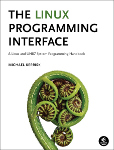|
HTML rendering created 2023-12-22 by Michael Kerrisk, author of The Linux Programming Interface. For details of in-depth Linux/UNIX system programming training courses that I teach, look here. Hosting by jambit GmbH. |

|
|
NAME | SYNOPSIS | DESCRIPTION | OPTIONS | EXIT STATUS | SEE ALSO | NOTES | COLOPHON |
|
|
|
UID0(1) uid0 UID0(1)
uid0 - Elevate privileges
uid0 [OPTIONS...] [COMMAND...]
uid0 may be used to temporarily and interactively acquire
elavated or different privileges. It serves a similar purpose as
sudo(8), but operates differently in a couple of key areas:
• No execution or security context credentials are inherited
from the caller into the invoked commands, as they are
invoked from a fresh, isolated service forked off the service
manager.
• Authentication takes place via polkit[1], thus isolating the
authentication prompt from the terminal (if possible).
• An independent pseudo-tty is allocated for the invoked
command, detaching its lifecycle and isolating it for
security.
• No SetUID/SetGID file access bit functionality is used for
the implementation.
Altogether this should provide a safer and more robust
alternative to the sudo mechanism, in particular in OS
environments where SetUID/SetGID support is not available (for
example by setting the NoNewPrivileges= variable in
systemd-system.conf(5)).
Any session invoked via uid0 will run through the "systemd-uid0"
PAM stack.
Note that uid0 is implemented as an alternative multi-call
invocation of systemd-run(1).
The following options are understood:
--no-ask-password
Do not query the user for authentication for privileged
operations.
Added in version 256.
--unit=
Use this unit name instead of an automatically generated one.
Added in version 256.
--property=
Sets a property on the service unit that is created. This
option takes an assignment in the same format as
systemctl(1)'s set-property command.
Added in version 256.
--description=
Provide a description for the service unit that is invoked.
If not specified, the command itself will be used as a
description. See Description= in systemd.unit(5).
Added in version 256.
--slice=
Make the new .service unit part of the specified slice,
instead of user.slice.
Added in version 256.
--slice-inherit
Make the new .service unit part of the slice the uid0 itself
has been invoked in. This option may be combined with
--slice=, in which case the slice specified via --slice= is
placed within the slice the uid0 command is invoked in.
Example: consider uid0 being invoked in the slice foo.slice,
and the --slice= argument is bar. The unit will then be
placed under foo-bar.slice.
Added in version 256.
--user=, -u, --group=, -g
Switches to the specified user/group instead of root.
Added in version 256.
--nice=
Runs the invoked session with the specified nice level.
Added in version 256.
--chdir=, -D
Runs the invoked session with the specified working
directory. If not specified defaults to the client's current
working directory if switching to the root user, or the
target user's home directory otherwise.
Added in version 256.
--setenv=NAME[=VALUE]
Runs the invoked session with the specified environment
variable set. This parameter may be used more than once to
set multiple variables. When "=" and VALUE are omitted, the
value of the variable with the same name in the invoking
environment will be used.
Added in version 256.
--background=COLOR
Change the terminal background color to the specified ANSI
color as long as the session lasts. If not specified, the
background will be tinted in a reddish tone when operating as
root, and in a yellowish tone when operating under another
UID, as reminder of the changed privileges. The color
specified should be an ANSI X3.64 SGR background color, i.e.
strings such as "40", "41", ..., "47", "48;2;...",
"48;5;...". See ANSI Escape Code (Wikipedia)[2] for details.
Set to an empty string to disable.
Example: "--background=44" for a blue background.
Added in version 256.
-M, --machine=
Execute operation on a local container. Specify a container
name to connect to, optionally prefixed by a user name to
connect as and a separating "@" character. If the special
string ".host" is used in place of the container name, a
connection to the local system is made (which is useful to
connect to a specific user's user bus: "--user
--machine=lennart@.host"). If the "@" syntax is not used, the
connection is made as root user. If the "@" syntax is used
either the left hand side or the right hand side may be
omitted (but not both) in which case the local user name and
".host" are implied.
-h, --help
Print a short help text and exit.
--version
Print a short version string and exit.
All command line arguments after the first non-option argument
become part of the command line of the launched process. If no
command line is specified an interactive shell is invoked. The
shell to invoke may be controlled via --setenv=SHELL=... and
currently defaults to the originating user's shell (i.e. not the
target user's!) if operating locally, or /bin/sh when operating
with --machine=.
On success, 0 is returned. If uid0 failed to start the session or
the specified command fails, a non-zero return value will be
returned.
systemd(1), systemd-run(1), sudo(8), machinectl(1)
1. polkit
https://www.freedesktop.org/wiki/Software/polkit
2. ANSI Escape Code (Wikipedia)
https://en.wikipedia.org/wiki/ANSI_escape_code#SGR_(Select_Graphic_Rendition)_parameters
This page is part of the systemd (systemd system and service
manager) project. Information about the project can be found at
⟨http://www.freedesktop.org/wiki/Software/systemd⟩. If you have
a bug report for this manual page, see
⟨http://www.freedesktop.org/wiki/Software/systemd/#bugreports⟩.
This page was obtained from the project's upstream Git repository
⟨https://github.com/systemd/systemd.git⟩ on 2023-12-22. (At that
time, the date of the most recent commit that was found in the
repository was 2023-12-22.) If you discover any rendering
problems in this HTML version of the page, or you believe there
is a better or more up-to-date source for the page, or you have
corrections or improvements to the information in this COLOPHON
(which is not part of the original manual page), send a mail to
man-pages@man7.org
systemd 255 UID0(1)
Pages that refer to this page: systemd-run(1), systemd.directives(7), systemd.index(7)